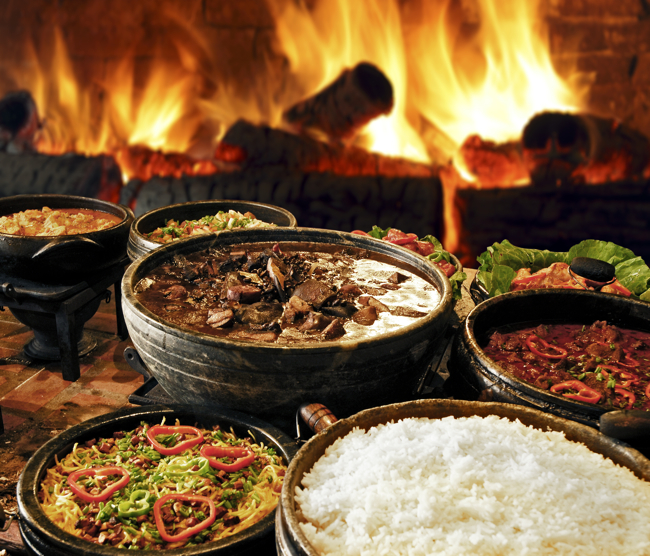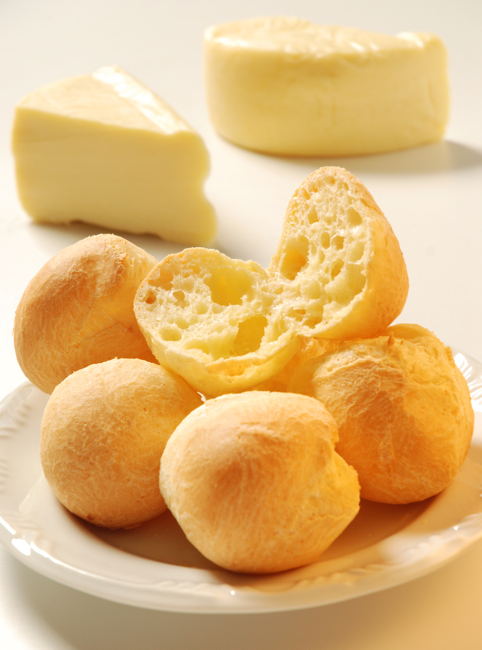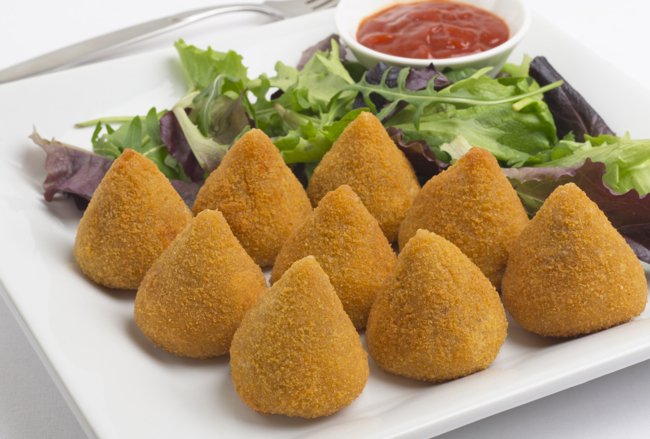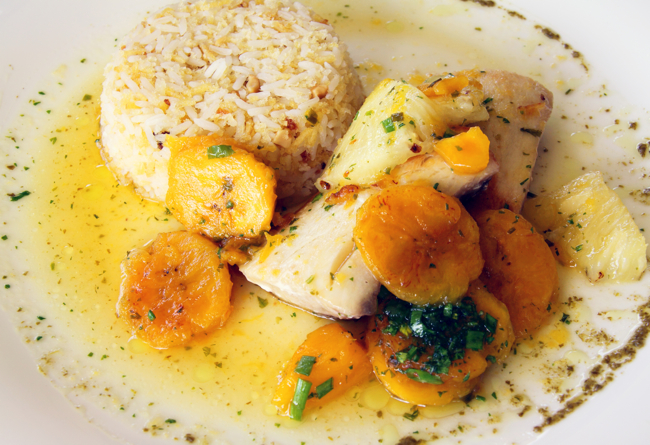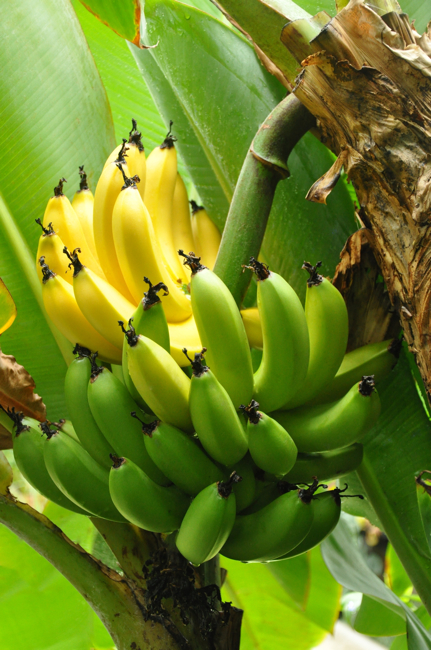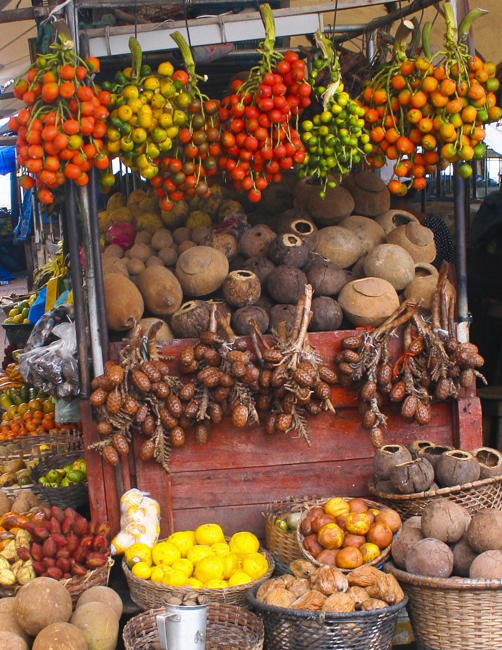I am text block. Click edit button to change this text. Lorem ipsum dolor sit amet, consectetur adipiscing elit. Ut elit tellus, luctus nec ullamcorper mattis, pulvinar dapibus leo.
Brazilian culinary is a product of cultural tradition, geography, and circumstances of its drastically different regions. The different dishes that today compound what is known as Brazilian Cuisine emerged from the dominant culture present in a region: Portuguese and – mostly -Native Brazilian Indian in the North; a combination of Portuguese, Native Brazilian Indian, and African in the Northeast and part of the Southeast (up to the very south of Minas Gerais); mainly Native Brazilian Indian and Portuguese in the West, and Portuguese and other Europeans (Italians, Germans, Austrians, Russians, Polish, French etc.) from Sao Paulo state to the south border of Rio Grande do Sul. This is not a rigid classification by any means, for in every region there will be a sub-influence of this or that group, collaborating for a different development in the local cuisine, but it is a safe guideline for anyone interested in learning why it is so difficult, if not impossible, to classify under one label, the incredible gastronomic variety available today in Brazil.
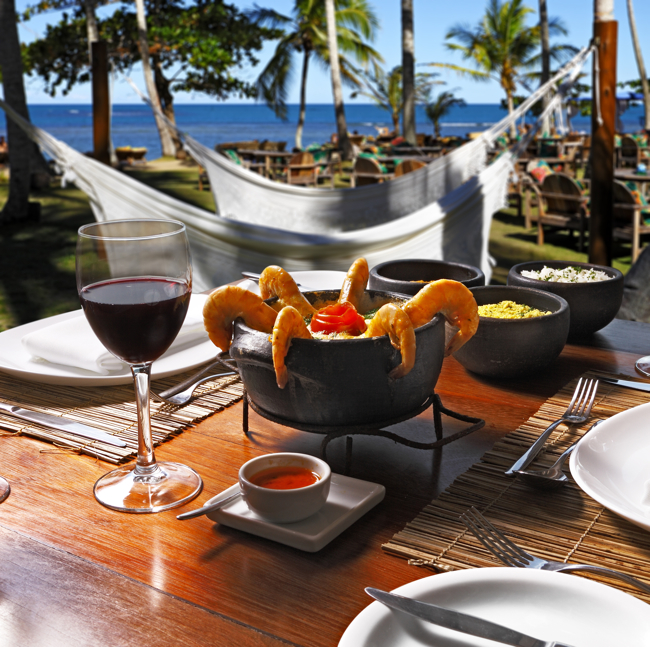 Before the arrival of the Europeans, the meats consumed by the Indians were whatever was available at their location, like birds (toucans, nhambus, araras, urus), mammals (monkeys, tapirs, capivaras, quatis iraras and deer), besides a huge variety of fish and seafood. Indians didn’t consume water birds, like ducks, due to their beliefs that, if they did, they’d lose their vigor as swimmers. Several travelers reported extensive lists of the Brazilian indigenous fauna, emphasizing, from the beginning, two very important elements in the Native Brazilian Indian diet: corn and mandioca (cassava). Both would be present in the story of European travelers up to the 19th Century, as they would point the several types of uí (cassava flower) available among Indians: carimã, a fine flower; uí-tinga, a white, semi-toasted flower; uiatã, a roughly, dark toasted flower; tipirati, sliced cassava mashed and grinded in a pestle, then left to dry under the sun, and puba flower, made with softened cassava, fermented in water.
Before the arrival of the Europeans, the meats consumed by the Indians were whatever was available at their location, like birds (toucans, nhambus, araras, urus), mammals (monkeys, tapirs, capivaras, quatis iraras and deer), besides a huge variety of fish and seafood. Indians didn’t consume water birds, like ducks, due to their beliefs that, if they did, they’d lose their vigor as swimmers. Several travelers reported extensive lists of the Brazilian indigenous fauna, emphasizing, from the beginning, two very important elements in the Native Brazilian Indian diet: corn and mandioca (cassava). Both would be present in the story of European travelers up to the 19th Century, as they would point the several types of uí (cassava flower) available among Indians: carimã, a fine flower; uí-tinga, a white, semi-toasted flower; uiatã, a roughly, dark toasted flower; tipirati, sliced cassava mashed and grinded in a pestle, then left to dry under the sun, and puba flower, made with softened cassava, fermented in water.This reduction technique of food in to flowers was the main resource available to the Indians when it came to food preservation, facilitating its transportation and maintenance in long journeys. Besides the uí, Indians produced other kinds of flowers they called cuí, using other tubercles like the native and much appreciated sweet potato. Even fish would receive similar treatment: after abundant fishing expeditions, the fish would be dried in the moquém (a kind of wooden grill), mashed and grinded in a huge pestle, resulting in what they called piracuí, or fish flower.
Indians enjoyed very easy to prepare roasted meats, and also flowers, for they could prepare several dishes with it like pirão (cassava flower mixed with meat broth, until it gets a thick consistency), mingau, a dish with the consistency of a hearty soup and paçoca (dried meats or fish mixed with cassava flower, pressed together until it develops a firm, hard consistency).
Almost immediately after their arrival, the Portuguese initiated the domestication of animals and started to raise animals for food, a very important activity in the early days of colonization. The newly discovered world received many exotic animals from Europe: dogs, bovines, pigs, goats, chickens, and horses, all non-existent in the new continent.
The Portuguese introduced the cultivation of wheat, barley, rice, sugar cane, besides the costume of maintaining vegetables and fruit gardens. Brought by them also were bacon, condiments (garlic, onions, cumin, cinnamon, cloves, ginger, gergelim, saffron, parsley, olive oil, vinegar etc.), opening new avenues in the processing of foods. From their daily diet they imported their “refogados” and “cozidos” (stews and ragouts), meat and vegetables dishes cooked in generous sautées of garlic, onions, olive oil and other condiments.
The African slaves added a twist to the Portuguese “refogado”, by using coconut milk and palm oil, enlarging the possibilities for “cozido” of meat, fish and other seafood. Refogados and cozidos were the embryo of the common feijoada of today, even though until recently the creation of the feijoada was attributed to the African slaves. Actually, in all Latin Europe, dishes prepared by slow cooking meats, poultry and/or fish and seafood, mixed to other ingredients like beans, rice or legumes and vegetables, are common: besides the Portuguese cozido, a mix of several cuts of meat with white beans, legumes and vegetables, we have the cassoulet, in France, the paella in Spain and the bollito in Italy. Africans preferred to cook their beans separately, in order to preserve its original taste, an indication that they would not mix so many different ingredients with beans, resulting in the feijoada (a very hearty stew with several cuts of red meat and pork as main ingredients, cooked slowly with beans and water, seasoned with sea salt, cumin and bay leaves, and a huge amount of sauteed chopped garlic added at the end of the cooking process. Legumes like maxixe – no English translation: a delicious green legume reminding a kiwi in format, with a coarse skin – collard green leaves, jiló (no translation either: a green, round legume with seeds inside, juicy and tart in taste, similar in appearance to the little Asian green eggplant – okra and pieces of pumpkin were frequently added to the mix in the Northeast). The beans used were always in agreement with local preferences and availability: in the Northeast, feijoadas were prepared with “mulatinho” beans, in Rio de Janeiro with black beans, in São Paulo and the rest of the south with “roxinho” beans, though it is more and more common to find the dish prepared in the south also with black beans.
Asian in its origins, rice was first cultivated in Europe by Arabs, while the Portuguese transported the grain to Brazil. In the 19th Century, rice was cultivated in the Vale do Ribeira (south shore of São Paulo state, where the land provides enough humidity for its culture) and from there exported to Europe, where it became widely used. The idea of mixing rice with beans emerged first in the south of the country, where it was first cultivated, being introduced much later to the north and northeast, where beans were eaten with cassava flower, dry or fresh meat or fish, until very recently (up to late 1960’s/early 70’s). On the other hand, cassava flower, abundantly used in the north and northeast is not a daily part of the diet in in São Paulo, Paraná, Santa Catarina and Rio Grande do Sul. In those states, cassava flower is used almost exclusively as farofa, a side dish prepared with it, a necessary presence in any minimally decent feijoada.
According to researcher Câmara Cascudo, beans became popular almost simultaneously among the northeast cowboys and the bandeirantes paulistas (explorers from São Paulo; groups of bandeirantes would travel to unexplored lands in the country, conducting cattle, looking for gold or precious stones, starting new settlements in order to secure the land against undesirable invasions of territory by foreigners, particularly Spaniards). During their workday and/or excursions to the unknown jungles, cowboys and bandeirantes always carried dry meat (very similar to the American jerk meat), cassava flower and beans, a very easy, almost non-perishable food, also a good source of protein. Bandeirantes planted beans in virtually every new settlement established, and also along their trails, so when they came back it was always possible to have something to eat, in case there was nothing left at the end of their voyages. In the case of the northeast cowboys, besides cassava, beans were one of the few sources of food widely accepted by the dry climate of the region, reason why it was so widely cultivated.
In Bahia, particularly in Salvador, the state capital, the West African presence brought about a very unusual gastronomy: religious ritual foods from yorubá tribes that, with the passing of time were incorporated to the local cuisine. Dishes carefully prepared like vatapá, an intricate stew made with fresh and dried shrimps, shrimp shell flour, palm oil and fish (just to name a few ingredients), or amalá (also known as carurú – no English equivalent), made of painfully thin sliced okra, shrimps and palm oil, are known as ritual foods for Yansã (a warrior goddess, the winds are her element) and Xangô (ruler of Justice, god of thunder), respectively. African dishes like these became popular outside the African community, most likely due to its spectacular aroma and delicious taste. One can imagine that, most likely, during colonization, slave owners ended up tasting the African dishes and certainly approved of it – who wouldn’t?… Today, these West African recipes are popular mainly in Salvador, but lately became well known in the majority of state capitals of the country, though variations in recipes were introduced almost everywhere.
Other African dishes worth mentioning are the “moquecas”, recipes where the main ingredients are fish and/or seafood, prepared with coconut milk, palm oil and spices. Exclusively found in Bahia, until a hundred years ago or so, these moquecas ended up traveling to other states of the northeast and also to the southeastern Espírito Santo, where their local verson, called “moqueca capixaba” is a source of local pride. To this day the capixabas (inhabitants of Espírito Santo state) claim that they “invented” the moqueca; we should all listen quietly and pretend we believe them!…
In other states of the northeast, the forte is seafood, due to its abundant availability, though some types are not found elsewhere, like the very popular sururu, a very small mollusk of unforgettable taste, cooked in a tomato broth and usually served with white rice. Sururu is rarely known outside Pernambuco and bordering states, since it usually occurs in that region only.
The north region (states of Amazonas, Acre, Amapá, Pará Rondônia, Roraima and Tocantins), with its unusual flora and fauna, and unquestionable Native Brazilian Indian influence in its everyday diet, lends to the country recipes virtually unknown elsewhere like tucupí, a powerful poison extracted from the cassava, boiled for a long time and transformed in to a delicious sauce used to prepare pato (duck) no tucupí, one of the most typical dishes of the region. Another very popular dish in the north is tacacá, an indigenous daily recipe prepared by mixing in a bowl, the yellow tucupí broth, overcooked cassava, dried shrimps and jambu leaves (a delicious vegetable that will mildly numb your lips).
Tacacá is so popular up north that it became almost a mandatory ritual during the eternally hot and steamy afternoons of the Amazonian region. A wide variety of fish, many unknown outside the region (pirarucu, tambaqui, tucunaré, jaraqui etc.) are also a daily presence in the local culinary, not exactly a surprise when we consider that the region has over eleven hundred rivers! Common native fruits, unknown until recently to other parts of the country and also outside Brazil are cupuaçú, açaí, burití, beriba and cajá, widely used in the prepare of refreshing juices and desserts.
São Paulo and the other southern states (Paraná, Santa Catarina and Rio Grande do Sul) are blessed with the widest variety of foreign influences in its culinary, probably the most obvious example of why it is impossible to determine a gastronomic model that should fit the whole country, a so called Brazilian Culinary. These were the states that received the majority of European immigrants: Germans, Austrians, Italians, Polish, Russians, French, Irish etc., besides the Portuguese colonizer. More recently, the 20th Century saw a huge influx of Asians settling in the region (Japanese, Chinese and Koreans), so its cuisine can provide the best examples of dishes of several nationalities, many of them prepared with a local twist, sometimes the addition or substitution of an ingredient used in the Old Country but not found in the New World.
Brazil is a country of continental dimensions with very different cultural influences combined. Its national cuisine can be considered either the indigenous influences, present to this day in the Brazilian tables of the north region, the African dishes, famous in Salvador, the European taste developed in the southern states, or a combination of all of the above, without prejudice for its authenticity.
cc Gay Guides.com 2014-2021


